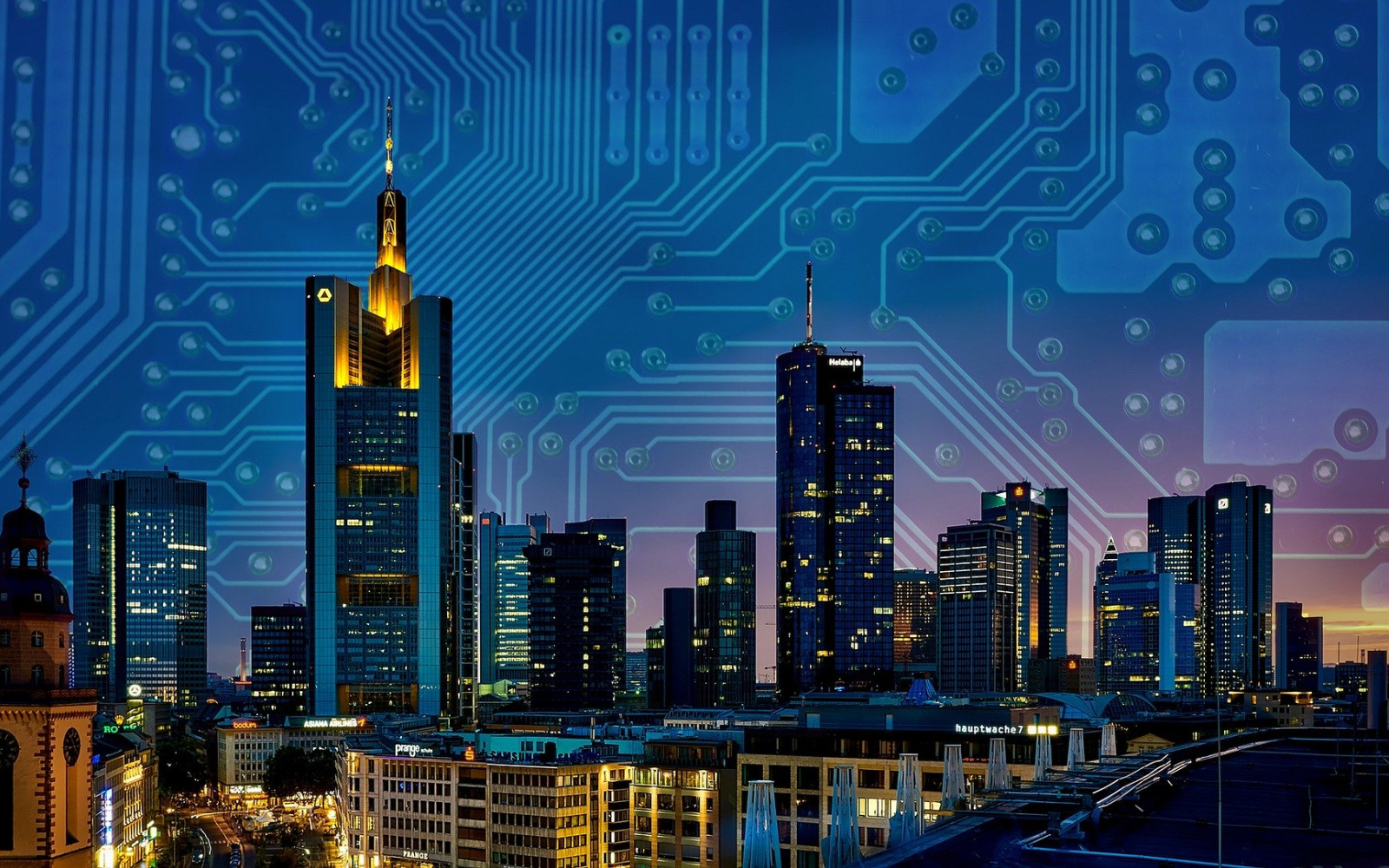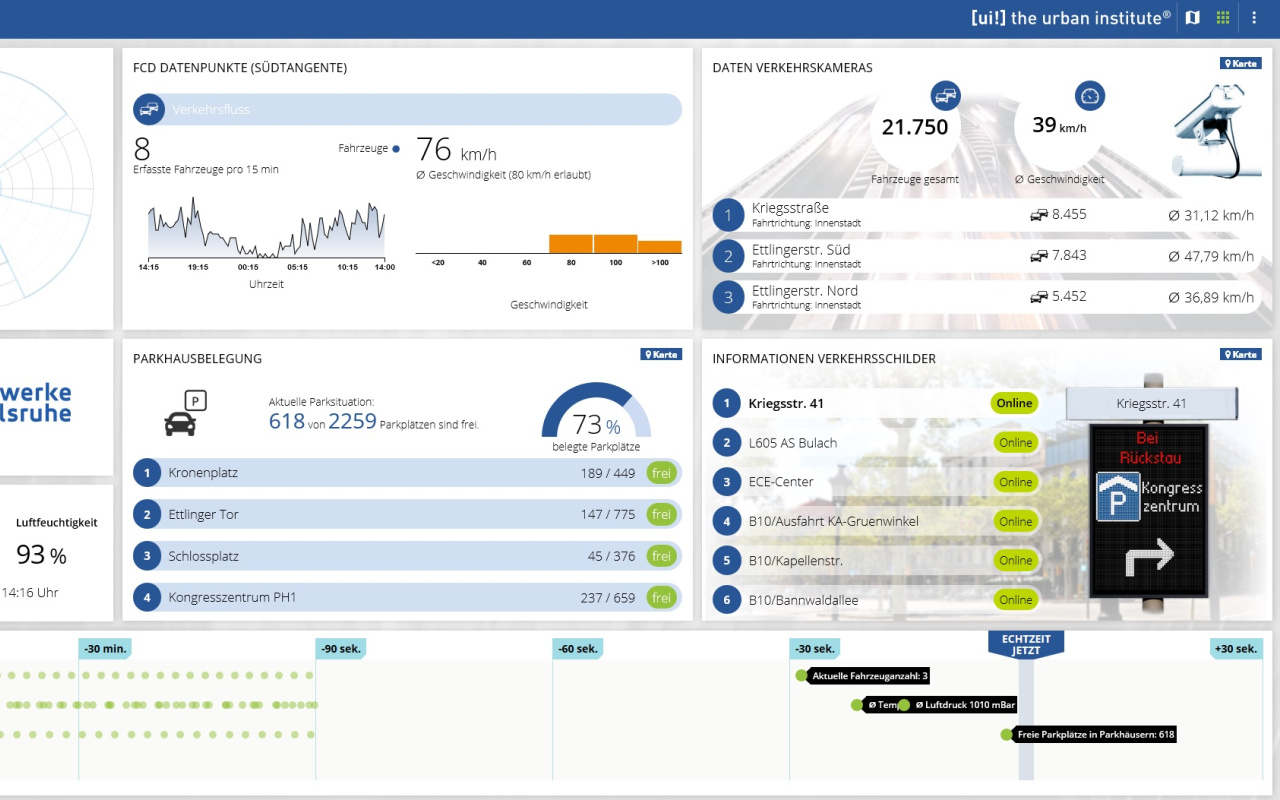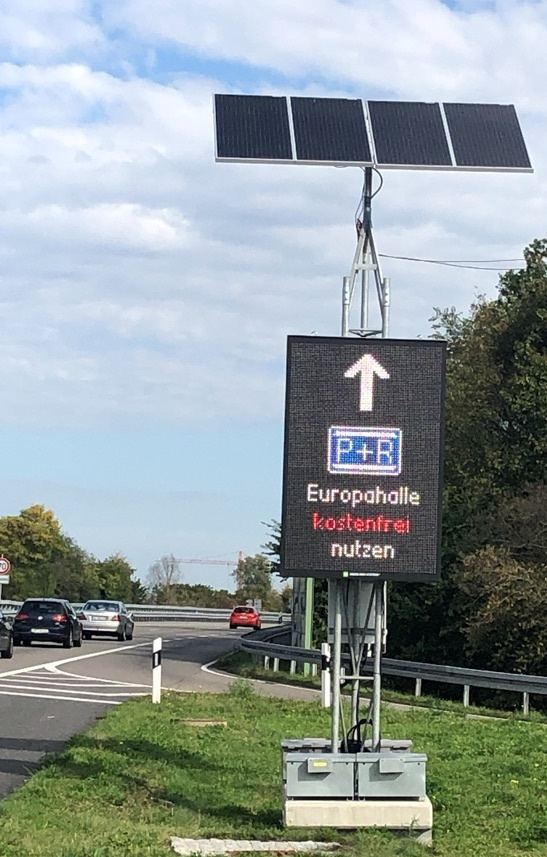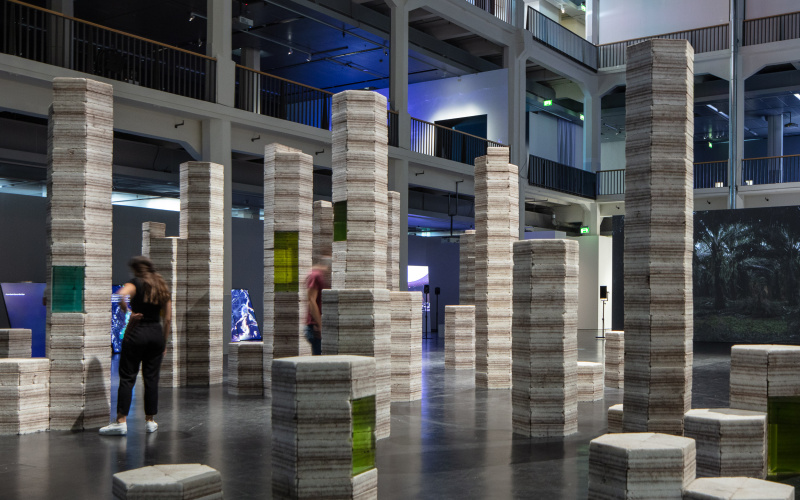Smart Efficiency, stupid Effectiveness?
Sustainability of a Smart City
Digital technology is supposed to turn cities into greener and more beautiful »smart cities«. But under what conditions is smart technology really sustainable?
BY JULIAN SCHELLONG
More than half of the world's population currently lives in cities, and this proportion is expected to rise to over two-thirds by 2050. Large cities are complex systems, always sharply on the verge of chaos. Their pulsation creates stress and friction at every turn. Couldn't there be a better way of managing this?
Many administrations use digital, networked technology to turn a city into a smart city. The buzzword »smart city« gathers hopes that technological interventions in the infrastructure will help to achieve political goals such as sustainability, efficient bureaucracy or participation.
Applications via app, efficient traffic management and smart waste bins
The authorities in Karlsruhe have been working for several years to make the city a smarter city. In 2017, the Office for Information Technology and Digitalization was founded for this purpose. One of the first tasks of this office is the development of the »digital@KA« app, a »multifunctional app« that aims to provide uncomplicated access to a wide range of services in the city. Instead of several accounts at different offices, a single access account will then suffice for all services. The app is currently in a second test phase and should be officially available by 2021 at the latest. The benefit of the app will be, according to the office, a uniform access to the city administration.
The office does not get more concrete in its presentation of the project. It remains unclear which municipal services will be made accessible via smartphone, whether the app will only offer another acceptance of applications or whether internal bureaucratic procedures will be reformed. Instead, the app is described with keywords such as »hybrid overall concept«, »customizable« or »open urban innovation«. Obviously, the path is the goal here. One does not know exactly what for, but it is being diligently digitized in Karlsruhe.
The most recent measure to promote a smart city was a pilot project for a dynamic traffic management system to control the flow of cars in the city. To do this, the municipal utilities combined data on the number of cars from various sources such as thermal imaging cameras or parking garage barriers. This made it possible to have a real-time overview of traffic density (traffic in the city is defined as car traffic only). LED information boards at intersections informed drivers about free parking spaces and traffic jams and directed them away from congested main arteries on secondary routes.
This system is not yet permanently operational. The pilot phase served to test the necessary technology in practice and to sound out what possibilities for traffic control are opened up by this form of data collection. Valid statements on whether this large-scale monitoring and targeted information of motorists will really equalize traffic in the city do not yet exist. However, experience to date has shown that this would be possible in the future.
The digitalization of waste management is also in test operation at the Verkehrsbetriebe Karlsruhe (VBK, engl. Karlsruhe Transport Company). In 2017, VBK, together with the municipal utilities, have begun equipping rubbish bins at tram stops with sensors that automatically detect the fill level of the bin and report it to the central office of the VBK. The aim is to adapt emptying trips to the volume of waste in order to make the city cleaner and waste collection more sustainable. If the garbage truck is only called out when buckets are full, this will save working time and fuel - the VBK hopes to achieve six-figure savings every year. The VBK does not currently keep a balance sheet for CO2 savings.
Political Technologies
As varied as the purposes that Smart City projects are intended to achieve are, the instruments are clear: digital communication technology, usually in small, mobile devices, and a network that encompasses as many actors and elements of a city as possible. This technology is intended to improve processes that already work quite well in analog form. Better then usually means: faster, lighter, greener. Infrastructure projects in particular aim to make them more environmentally friendly by reducing CO2 emissions through efficient traffic control.
Smart City projects are attractive for two reasons: Firstly, they involve futuristic-looking technologies. These are applied to infrastructures that are mainly characterized by the fact that they are quite boring. Roads, public authorities or waste collection systems work well when they are not conspicuous and everyday operations can run as smoothly as possible. With more sensors, LEDs and data this Moloch suddenly becomes more colourful and exciting. And secondly, Smart City technology conveys the power fantasy that you can control a hive of activity like a big city centrally with a few hacks for the better. In a network of sensors and interfaces, human behavior in the hustle and bustle of a big city becomes handy data points on a screen. The idea that the actions of residents in a smart city could be made visible as data points and then steered in one direction by cleverly placed crash barriers gives rise to a sense of control and power that analog governance procedures do not offer.
Efficiency and effectiveness of smart technologies
But under what circumstances is a Smart City really more environmentally friendly than a »stupid city«? First of all, a system such as the traffic management system or smart garbage cans requires a lot of computer chips and devices. The extraction of raw materials for the production of these components is resource and energy intensive. These emissions from the construction would have to be weighed against the efficiency gains in the use of the system. In addition to the environmental pollution caused by the production of the devices, there are the dubious working conditions under which, for example, lithium, cobalt or rare earths are extracted for batteries. A smart city system for intelligent infrastructure control would probably have to be very effective and run for a long time to recover the emissions produced during construction.
Whether a Smart City is ultimately more sustainable depends on what happens to the resources that could be saved through more efficient control. Many technological developments designed to increase the efficiency of systems have a rebound effect: resources saved are consumed elsewhere and thus impact the environment again. An example of the rebound effect is a household that purchases a modern, energy-saving refrigerator. This new appliance initially consumes less energy than the old one. The sustainability of this investment depends on what happens to the old refrigerator: If you now place it in the garage to cool drinks, two appliances will ultimately be connected to the grid and the household will effectively consume more energy. The same problem arises with the efficient control of car traffic: if the smoother flow of traffic means that more people drive into the city centre by car, the CO2 savings from the smart traffic management system will fizzle out.
The sustainability of technological developments such as a smart city must not be assessed on the basis of their efficiency, but rather on their effectiveness. Do the new devices only create more efficient processes or are emissions effectively reduced overall? New technologies may be more efficient, but they are not necessarily more environmentally friendly. To make a city really more sustainable through smart technologies, the resources saved through efficiency gains must not be spent on more production and consumption, which means new emissions. Installing large-scale new technologies such as sensors, interfaces and computers in an urban infrastructure may be necessary to make a city greener, but it is certainly not enough. It is not the technology itself but the way it is used that creates sustainability.
_________
Amendment note: In an earlier version of the article, it was claimed that the project with smart waste bins of the Verkehrsbetriebe Karlsruhe and municipal utilities was finished. This is not the case and the corresponding paragraph has been corrected.





